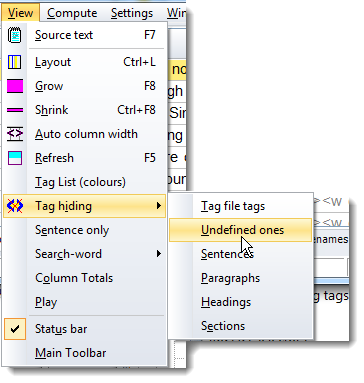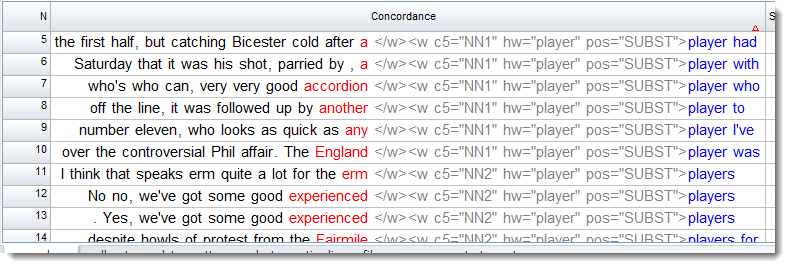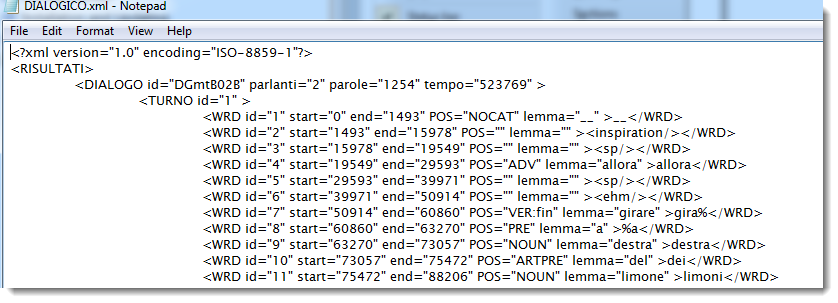XML text
What is XML?
XML text has angle-bracketed mark-up which provides additional information. For example the British National Corpus has text which is structured like this:
<s n="43">
<w c5="PNP" hw="i" pos="PRON">I </w><w c5="VVB" hw="mean" pos="VERB">mean</w>
<c c5="PUN">, </c><w c5="AVQ" hw="where" pos="ADV">where </w>
<w c5="VDB" hw="do" pos="VERB">do </w><w c5="NN1-VVG" hw="eating" pos="SUBST">eating </w>
<w c5="NN2" hw="disorder" pos="SUBST">disorders </w>
<w c5="VVB" hw="come" pos="VERB">come </w><w c5="PRP" hw="from" pos="PREP">from</w>
<c c5="PUN">?</c>
</s>
<s> ... </s> signals a sentence
<w c5="PNP" hw="i" pos="PRON"> signals that the next word is a pronoun (coded PNP), head-word is "i",
<w c5="NN2" hw="disorder" pos="SUBST"> signals that the next word is a plural noun belonging to the head-word "disorder" and it's a substantive.
c5="NN2" is an attribute of the <w start-tag, hw="disorder" is another attribute. There can be many attributes in a start-tag. The <c start-tags have only one, but the <w start-tags have 3 in this BNC text.
WordSmith's handling of XML
By default, WordSmith simply ignores all the mark-up so a word list will only get the words in black inserted in it, a concordance will only see those words (I mean, where do eating disorders come from?).
Searching using Attributes
If you want to search for all instances of NN2 forms (plural nouns), you'd need to type
<w c5="NN2" * *>*
as your search-word and answer yes to the question as to whether you're concordancing on tags.
You would get results like this:

Hide the mark-up
If you prefer not to see all that the mark-up in grey, choose to hide the undefined mark-up


There is a button in the main tool which can show or hide mark-up, too.
Asterisks in your search-word
In the example above, we search on
<w c5="NN2" * *>*
<w because each start-tag where NN2 forms are found starts with <w and the very first attribute is c5="NN2". Then two asterisks to indicate that we aren't interested in the hw or pos attributes. Then a closing > and another asterisk because the word which follows will be right next to the > in our corpus.
For two successive parts of speech,
<w c5="AT0" * *>* <w c5="NN1" * *>*
looks for any article (the/a/an) followed by any singular count noun.
A search on
<w c5="NN?" hw="player" *>*
where we are allowing NN1 or NN2 and requiring the hw to be player,gets results like this:

Another example
Searching Italian .XML containing text like this:

and wishing to find all cases of the ARTPRE part of speech, with the search-word specified like this

and answering yes to this:

we get a considerable concordance with entries like this:

(I have no idea why there are % symbols in the source .XML, by the way.)
See also : Handling the BNC
